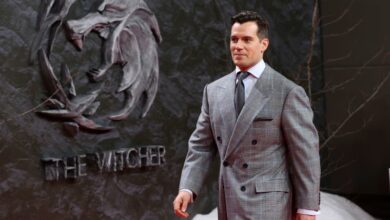Mexico City art exhibit questions human beings’ relationship with nature

Mexico City, Feb 8 (EFE).- A sand-filled room with cactus sculptures warning of the dangers of unchecked global warming and a dangling, upside-down skeleton representing mankind’s Machiavellian machinations are among the highlights of “Desert Flood,” an exhibit in the Mexican capital’s LagoAlgo cultural center that questions human beings’ destructive relationship with nature.
“(‘Desert Flood’) is an immersion into the theme of climate change, explored through a dialogue or conversation among national and international artists,” Noemi Ontiveros, LagoAlgo’s executive director, said in an interview with Efe.
The exhibit features the work of Swiss artist Claudia Comte, Mexico’s Gabriel Rico and Denmark’s SUPERFLEX collective, who portray the devastating effects of climate change from different perspectives while also examining the origins of the current crisis.
“Around contemporary ecological issues, particularly water, essential resource and source of life as well as danger and potential destruction, the exhibition Desert Flood brings together the artists Claudia Comte (1983, Switzerland), Gabriel Rico (1980, Mexico) and SUPERFLEX (collective founded in 1993, Denmark), not as an umpteenth ‘wake up call’ but in the perspective of an ecological thought in action,” OMR, the gallery that organized the exhibition, said in a statement.
Rico, in his work, explores the Anthropocene, a proposed geological epoch that succeeds the current Holocene epoch and dates from the time when human activity began having a significant impact on Earth’s geology and ecosystems.
The installation art created by that native of the western state of Jalisco includes objects that he digs up, finds or constructs and “ironically and poetically” combines nature and culture.
Several of Comte’s artistic contributions are featured in a sand-filled space depicting a climate-change-altered desert landscape dotted with cactuses, a signature element of the Swiss artist’s work.
The exhibit also includes paintings by Comte in which the exclamation “ha ha ha ha” is written in cartoon lettering and juxtaposed against devastating scenes of pollution and drought.
SUPERFLEX, a collective founded in 1993 by Jakob Fenger, Rasmus Nielsen and Bjornstjerne Christiansen, contributes to the exhibit with depictions of rising tides and calls to harness the power of collective intelligence.
This is achieved through, among other works, a neon installation with the all-caps warning/call to action “WE ARE ALL IN THE SAME BOAT.”
“Underlining the rise in water levels (up to 14 percent of the world’s population, or 1 billion people, will be affected by 2050), collective SUPERFLEX completes the paradox initiated by Claudia Comte,” OMR’s statement read.
“Desert Flood” will be inaugurated Thursday at LagoAlgo, a cultural center built in the Brutalist architectural style and located near Chapultepec Park, one of Latin America’s largest urban green spaces.
The building, which at the time only housed a restaurant, was forced to shut down in 2020 due to the Covid-19 pandemic.
It was then the idea emerged to re-envision the center as a much more inclusive space and reconsider the need to build new levels of consciousness, Ontiveros said.
A decision was made to create a hybrid “gathering place for diverse audiences,” combining a restaurant serving organic cuisine from locally farmed ingredients with a contemporary art section open free of charge to the general public.
And with “Desert Flood,” the third exhibit to be held at LagoAlgo, that space is remaining true to its new vocation as an “inclusive and diverse” space for all types of visitors, the center’s executive director said. EFE
ia/mc





